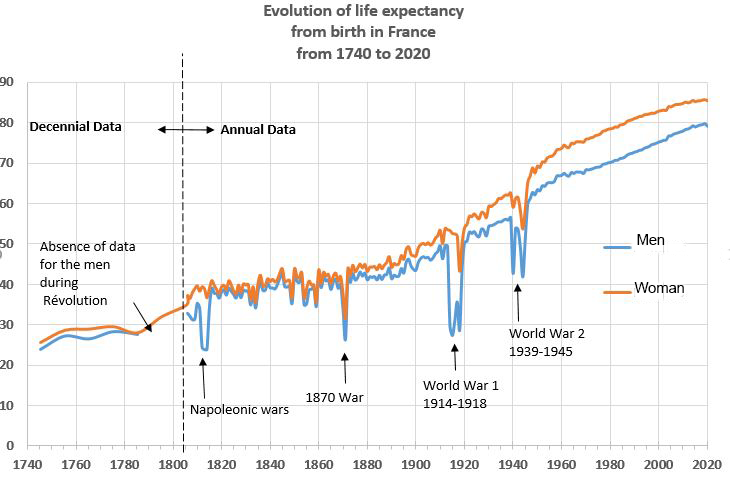Life expectancy in France

Reading the graph
This graph shows the variations in life expectancy in France from 1740 to 2020. The horizontal axis covers the last 280 years, from the mid eighteenth century. The life expectancy calculated for a given year represents the mean number of years a group of persons would live if the prevailing patterns of mortality in that year were to apply to them throughout their life. In other words, between their birth and first birthday, their risk of dying would be that of infants aged below one in that year, between ages 1 and 2, that of children aged 1-2 in that year, and so on.
Life expectancy is expressed in years. It is often calculated separately for males and females.
Life expectancy almost doubled in the twentieth century
In the mid eighteenth century, half of all children died before age ten, and life expectancy was just 25 years. It reached 30 years at the end of the century, then jumped to 37 years in 1810, partly thanks to smallpox vaccination. It continued to increase slowly during the nineteenth century, reaching 45 years in 1900. During the Napoleonic wars and the war of 1870, life expectancy plummeted temporarily to below 30 years once again.
During the twentieth century, life expectancy rose more quickly, except during the two World Wars. Infant and child deaths became much rarer: 15% of all babies died before age one in 1900, 5% in 1950 and just 0.4% (3,5 for thousand exactly) born in 2015. Life expectancy is still increasing, thanks to progress in the fight against cardiovascular diseases and cancer. In 2020, life expectancy at birth in France was 79,2 years old for men and 85,3 years old for women).
Sources
After 1997 : Human mortality database (www.mortality.org)
(Updated in July 2020)
